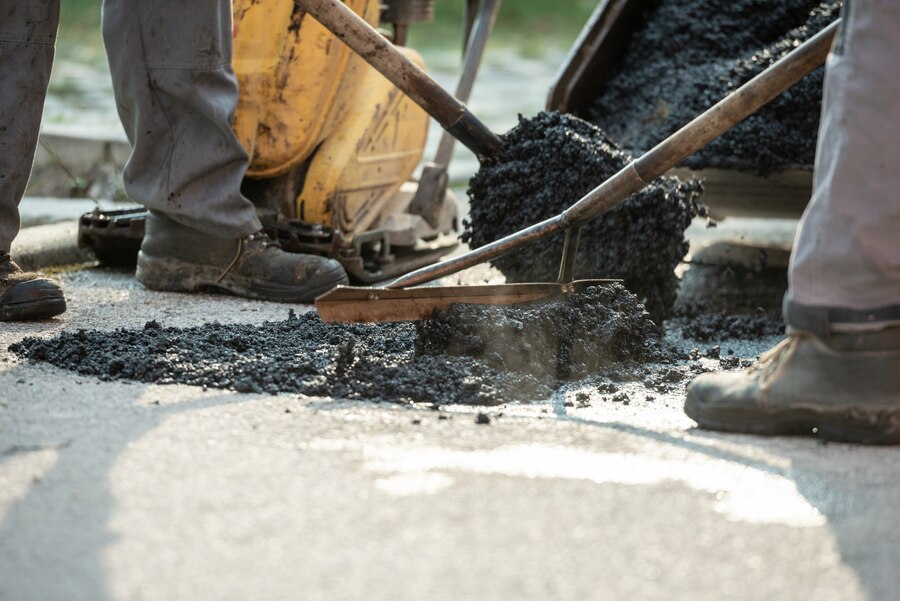%201%20(1).webp)
%201%20(1).webp)

The Importance of Quality Pavement Maintenance


Signs Your Dublin Asphalt Needs Immediate Repair Before Further Damage
Homeowners in Dublin often rely on their asphalt driveways and surfaces for daily use without giving much thought to their condition until problems start to show. Summer heat, regular vehicle traffic, and seasonal rainfall can all take a toll on asphalt over time. Staying ahead of damage is key. Small issues that go unnoticed today can become major repairs later, which means more time, higher costs, and potential safety risks. That is why it is important to keep an eye out for clear warning signs that your asphalt may need repair right away.
Without proper repair, asphalt issues can spread fast. Damaged surfaces not only affect the appearance of your property but can also lead to larger structural problems, trip hazards, or drainage failures. If you live in Dublin and use your driveway or walkway daily, catching problems early is your best defense against even more damage. Below are several signs that indicate your asphalt needs immediate attention.
Visible Cracking and Potholes
Cracks on your asphalt surface are one of the most obvious early warning signs. Some might seem minor at first, but they rarely stay that way.
There are two main types of cracks to watch for:
1. Alligator cracking: These look like a pattern of scales or webbing. They often appear due to pressure from vehicles or a weak base underneath.
2. Linear cracks: These run mostly in straight lines and typically appear due to aging or temperature shifts.
Left alone, cracks grow wider and deeper, especially when water starts to seep in. That water gets below the surface and can freeze during cooler months, weakening the base. Once that happens, you are likely to see depressions or crumbling on the edges. Potholes usually follow.
Minor cracking might seem like nothing to worry about, but it does not take long before small lines start spreading. Potholes can form when cracks widen and allow more water, dirt, and even plant roots to get inside. These holes are dangerous. They make walking or driving harder and can damage your tires or suspension.
If damage like this shows up, it is not something that can wait. A qualified technician can step in quickly to fix the damaged spots before the cracks spread or become deeper structural problems.
Water Pooling and Drainage Issues
In Dublin, summer storms are common, and your asphalt surface should be able to shed water properly. If you start to notice puddles collecting on your driveway, it is a sign that something is not right.
Here are some common reasons water begins to pool:
1. Poor grading during installation
2. Settling of the base layer underneath
3. Worn or low surface areas caused by older wear
Standing water may not seem like a big deal, but it is one of the most harmful things for asphalt. It seeps into small cracks and slowly softens the material from within. When water cannot drain properly, it speeds up surface breakdown. Add in the sun and traffic, and the asphalt weakens quickly.
Drainage issues usually mean the slope has shifted or the surface has settled in unwanted ways. A proper repair involves correcting those trouble spots using patching, resurfacing, and in some cases, grading adjustments. Quick fixes like sweeping the water away or removing debris will not take care of the underlying issue.
Keep in mind that good drainage protects the life of your entire surface. If water sits for too long after storms, or if your driveway takes longer to dry than your neighbor’s, it is something worth having looked at right away.
Uneven and Sunken Areas
If you start to feel dips or bumps while walking or driving across your asphalt, your surface may be experiencing shifting or sinking. These uneven areas often show up near heavy-use zones like driveways, apron sections, and garage entrances. Aside from the surface being unpleasant to walk or park on, it also raises the risk of water collecting in low spots.
In most cases, uneven or sunken asphalt is linked to problems with the base layer. If the foundation under the asphalt was not compacted correctly or if it has shifted over time due to soil movement or moisture, the top layer can collapse inward. Heavy vehicles, like delivery trucks or RVs parked in the same spot on a regular basis, can also make the issue worse.
There are clear signs to look for:
1. Low spots that hold puddles even after light rain
2. A visibly rippled or warped appearance from different angles
3. Edges that seem higher than the middle of your driveway
Repairing these issues starts with a proper assessment. Depending on how deep the problem goes, the repair might require patching a section or removing and rebuilding that area from the base up. If you are seeing minor uneven spots now, it is better to take care of them during warmer months before freezing conditions add more stress to the surface.
Fading and Surface Deterioration
Sun exposure is constant during the summer in Dublin, and UV rays can wear down your asphalt more than most people realize. Over time, you might notice that a once deep black surface has turned gray or patchy. While this might seem like a cosmetic problem at first, it usually points to larger surface deterioration.
Fading means the asphalt binder is starting to break down. When that happens, the material becomes brittle and more prone to chips, cracks, and small pieces breaking off from the surface. If you see grains of black grit collecting in gutters or along the edges of your driveway, that is another clue that the surface is deteriorating.
Common signs include:
1. Graying or discoloration across a wide area
2. A dry appearance with textures that feel rough or flaky underfoot
3. Small cracks appearing in faded areas
Addressing surface deterioration early on involves sealing and restoring the protective layer. A fresh sealant not only refreshes the look but also acts as a barrier against sun, water, and vehicle fluids. It extends the life of the asphalt and helps prevent larger problems like cracking or broken edges.
Ensuring the Longevity of Your Asphalt
If you are noticing any of the signs mentioned, such as cracks, sinking, puddles, or fading, waiting too long could cost you more in repairs down the line. Staying ahead of these issues is the simplest way to protect the investment you have already made in your driveway or walking surfaces.
Tending to asphalt damage does not just preserve curb appeal. It also keeps your space safer and helps you avoid deeper repair work in the future. A clear repair schedule, routine checks during peak weather times, and quick action when problems show up can make all the difference in the lifespan of your pavement.
Maintaining asphalt properly is all about timing and knowing what to look for. If your Dublin driveway or path shows any early signs of damage, do not ignore them. Getting a professional assessment allows you to act quickly, fix problems early, and keep your surface looking and performing its best for years to come.
If your driveway or walkway in Dublin is showing signs of wear, taking action early can help prevent more extensive and costly damage. Learn how asphalt repair in Dublin from Professional Pavement Services can restore the safety and appearance of your surface. For a quick estimate or to book a service visit, please contact us today.
Recent Posts

Join Our Community of Readers
Stay updated with our latest insights and share your thoughts with us in the comments!


.svg)












.png)




